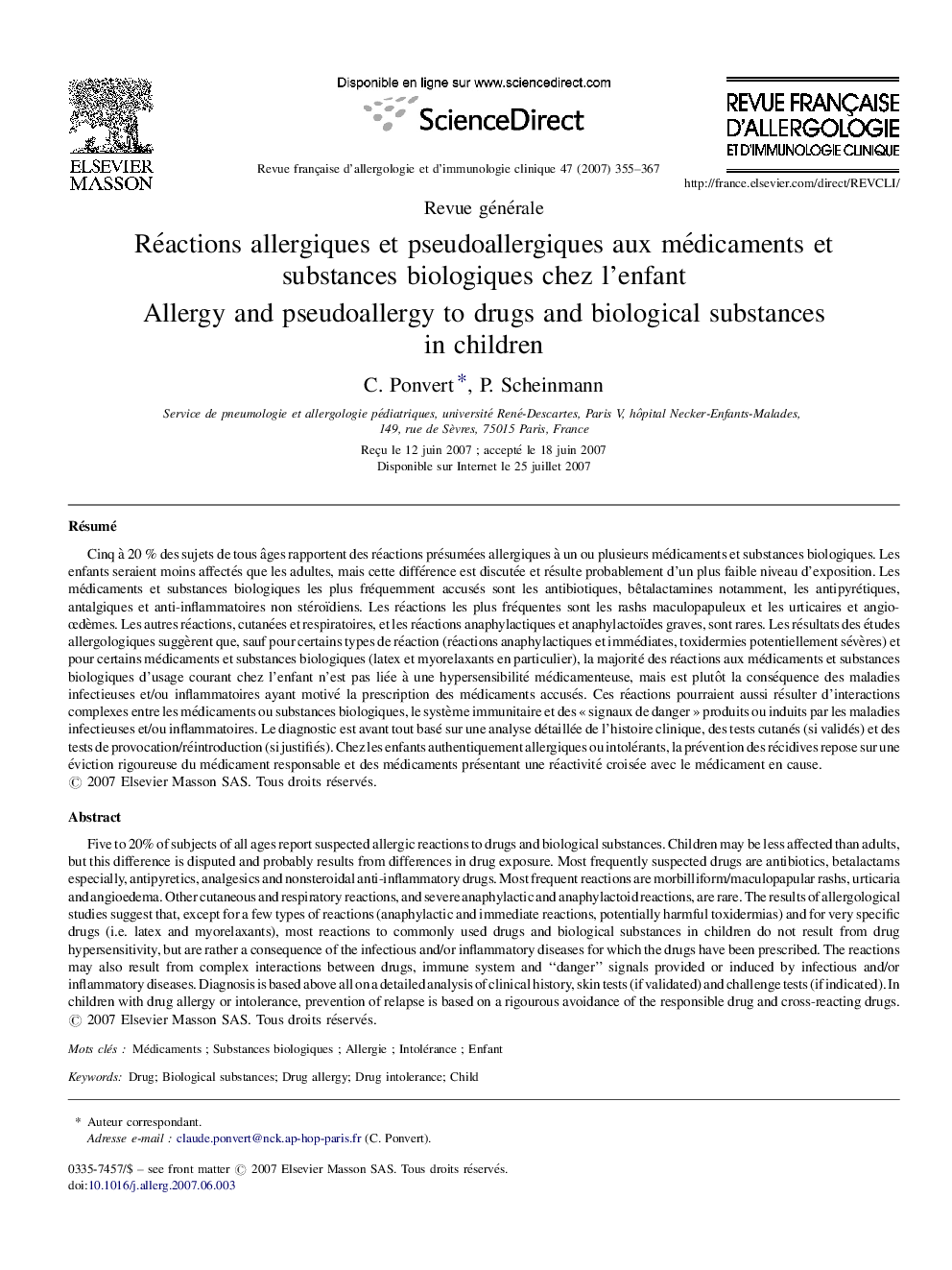| Article ID | Journal | Published Year | Pages | File Type |
|---|---|---|---|---|
| 2770341 | Revue Française d'Allergologie et d'Immunologie Clinique | 2007 | 13 Pages |
Abstract
Five to 20% of subjects of all ages report suspected allergic reactions to drugs and biological substances. Children may be less affected than adults, but this difference is disputed and probably results from differences in drug exposure. Most frequently suspected drugs are antibiotics, betalactams especially, antipyretics, analgesics and nonsteroidal anti-inflammatory drugs. Most frequent reactions are morbilliform/maculopapular rashs, urticaria and angioedema. Other cutaneous and respiratory reactions, and severe anaphylactic and anaphylactoid reactions, are rare. The results of allergological studies suggest that, except for a few types of reactions (anaphylactic and immediate reactions, potentially harmful toxidermias) and for very specific drugs (i.e. latex and myorelaxants), most reactions to commonly used drugs and biological substances in children do not result from drug hypersensitivity, but are rather a consequence of the infectious and/or inflammatory diseases for which the drugs have been prescribed. The reactions may also result from complex interactions between drugs, immune system and “danger” signals provided or induced by infectious and/or inflammatory diseases. Diagnosis is based above all on a detailed analysis of clinical history, skin tests (if validated) and challenge tests (if indicated). In children with drug allergy or intolerance, prevention of relapse is based on a rigourous avoidance of the responsible drug and cross-reacting drugs.
Related Topics
Health Sciences
Medicine and Dentistry
Anesthesiology and Pain Medicine
Authors
C. Ponvert, P. Scheinmann,
